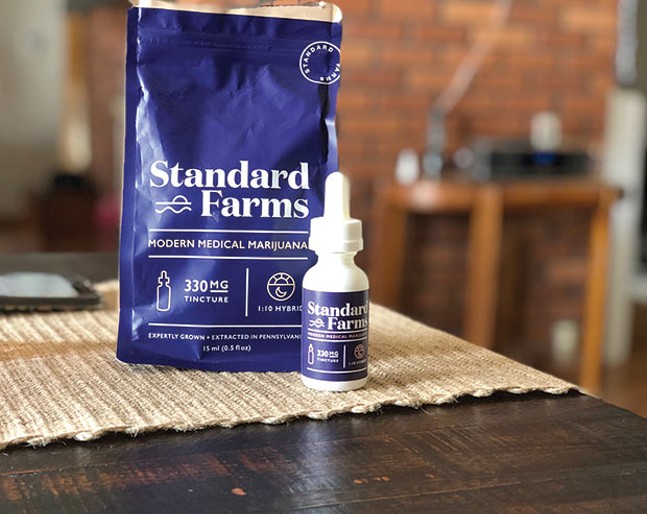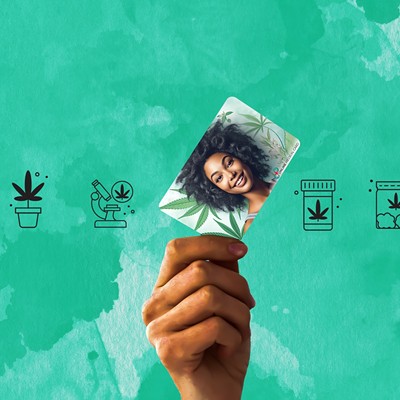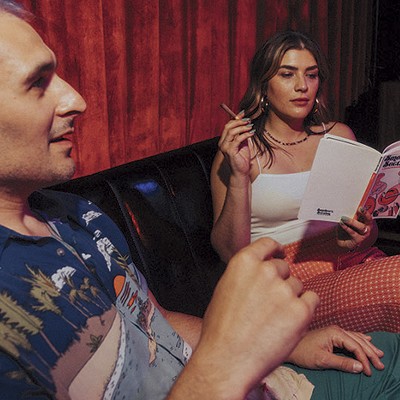In order to receive medical marijuana, a patient has to have one of 17 qualified conditions. If the patient can’t get their own medication, they can use a qualified caregiver, and that process takes about a month. Recently, Shuker got a call out of the blue from a man whose mother was in hospice care and completely out of it, during what were the last days of her life. The man asked if she knew how he could get medical marijuana.
Shuker decided she would help the man and contacted Briggs to figure out how. If you are a caregiver, you can be a caregiver to up to four patients. Briggs found a doctor willing to go to the woman’s home to check her out and qualify her for the medications. Shuker then obtained the medication, and the woman began taking it.
“Her son said she was in a fog and was hoping that medical marijuana would help make her last days comfortable, but not in an opioid haze,” Shuker says. “I took her the medication, and she was able to spend three days with her family and didn’t take anything other than medical cannabis.”
Briggs realized that legalization wasn’t the last hurdle in this battle, because people would still need help getting educated about and navigating through the system. In an effort to help other people, Briggs launched a new business, PA Compassionate Caregivers. Since most caregivers aren’t dealing with four patients at once, they can help people in the interim until their own caregivers get certified. Briggs says the service will connect people with a caregiver and a doctor to make sure they have a qualifying medical condition.
“There is a need for this,” Briggs says. “People shouldn’t be deprived of this medication if they need it, and they also shouldn’t be forced to take pain medications that reduce their quality of life in their final days. It’s all about quality of life.”
The low snore coming from Ryan Briggs has gotten a bit louder. He’s in a deep sleep, and that’s because of his medication. The sound is music to Diana Briggs’ ears. Prior to his cannabis treatments, Ryan didn’t sleep much. But who could sleep while going through a series of grand mal seizures? It’s a simple wish — for your kid to sleep peacefully — but until medical marijuana, it was one that Briggs couldn’t grant until now.
“I know that Ryan is never going to be able to walk or talk, but he deserves the best life that we can give him,” she says. “Right now, he’s averaging fewer than 100 seizures a day, and sometimes that number is under 50. And for the first time in a long time, he can sleep for 10 to 12 hours a night and get the rest he needs.
“That makes all of the work we did worthwhile.”
Sitting in her home a few hours earlier, Shuker agreed. Although she doesn’t have to say it in words, she can just point to her daughter. It’s Hannah’s 15th birthday, and she’s spending it differently than she has in the past. Rather than sitting balled up in her wheelchair waiting for the next seizure, she’s gleefully walking around her house getting ready to go out for the day. And this time, she and her mom won’t be taking the cumbersome wheelchair.
“She won’t sit still anymore,” Shuker says with a laugh, as her daughter lets out a loud scream. “She also won’t stop yelling. But I get it. For the first time in a very long time, she hears herself and sees herself walking. She doesn’t want to stop. It’s also nice to see her personality coming out. She’s even developed a teenage rebellious streak.”
It’s true. Like a lot of teenagers, Hannah seems to push the envelope to see how much she can get away with. Because of her history of serious seizures, Hannah wears a helmet — well, most of the time. As she trots around the house, Shuker tells her daughter to get her helmet. Hannah retreats to her room and carries it out. When her mother tells her to put it on, she squeals at her and shakes the helmet in a way that seems to say, “You told me to get it, not wear it.”
Hannah’s progress has been remarkable in the past year. She began walking more and, at the end of 2017, she smiled — a simple act that she hasn’t done in years.
“Seeing her smile then and now, it’s amazing to me,” Shuker says. “For the first time in years, I have my daughter back. This is true quality of life.”
In her short lifetime, Hannah has had more than 100,000 seizures. On an average month, she would have hundreds, if not more than a thousand. Last month, she had five. Shuker says not only is Hannah able to do more, but this new period of calm is giving her brain time to heal from the trauma of years of violent seizures.
Hannah has a therapist, and a teacher who comes to the home several times a week. And she is becoming more active since finding her voice. In a year full of major progress, Shuker is hoping for another big milestone in Hannah’s life.
“I’d love to hear her talk again. She was able to say a few words when she was much younger,” Shuker says. “They told me she’d never reach her teen years, yet here she is turning 15 today. I thought she’d never walk again or smile again, but look at her.
“That is one of the most determined little girls I have ever met. I’ll never say never.”
















